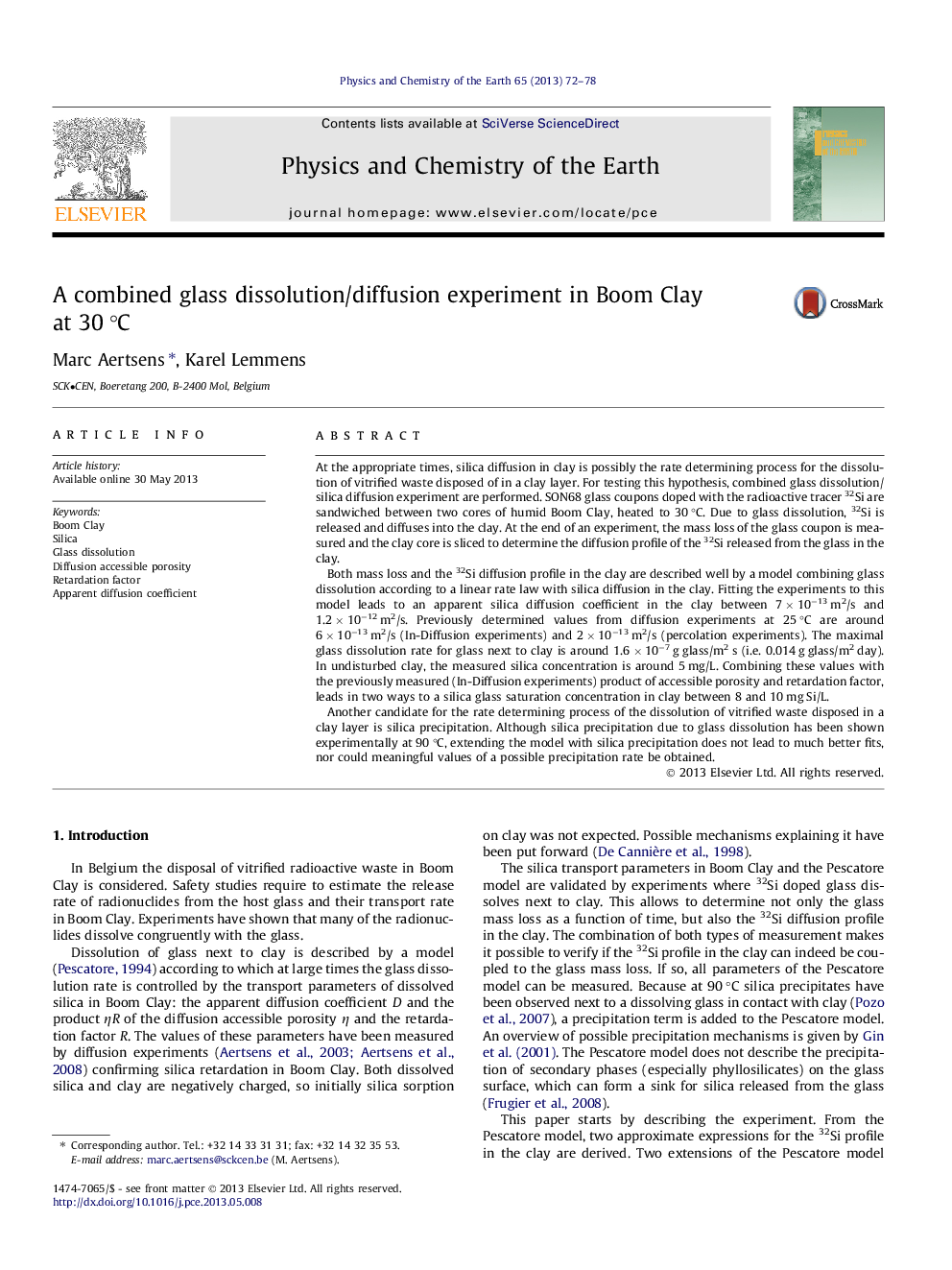| کد مقاله | کد نشریه | سال انتشار | مقاله انگلیسی | نسخه تمام متن |
|---|---|---|---|---|
| 4721011 | 1639358 | 2013 | 7 صفحه PDF | دانلود رایگان |
• SON68 glass coupons doped with tracer 32Si dissolve next to humid Boom Clay at 30 °C.
• Model combines glass dissolution according to a linear rate law with silica diffusion in the clay.
• Mass loss and tracer profile in the clay are described well by the model.
• Fitted parameter values in agreement with previously measured values in experiments dedicated for measuring that parameter.
• Fitting does not show silica precipitation.
At the appropriate times, silica diffusion in clay is possibly the rate determining process for the dissolution of vitrified waste disposed of in a clay layer. For testing this hypothesis, combined glass dissolution/silica diffusion experiment are performed. SON68 glass coupons doped with the radioactive tracer 32Si are sandwiched between two cores of humid Boom Clay, heated to 30 °C. Due to glass dissolution, 32Si is released and diffuses into the clay. At the end of an experiment, the mass loss of the glass coupon is measured and the clay core is sliced to determine the diffusion profile of the 32Si released from the glass in the clay.Both mass loss and the 32Si diffusion profile in the clay are described well by a model combining glass dissolution according to a linear rate law with silica diffusion in the clay. Fitting the experiments to this model leads to an apparent silica diffusion coefficient in the clay between 7 × 10−13 m2/s and 1.2 × 10−12 m2/s. Previously determined values from diffusion experiments at 25 °C are around 6 × 10−13 m2/s (In-Diffusion experiments) and 2 × 10−13 m2/s (percolation experiments). The maximal glass dissolution rate for glass next to clay is around 1.6 × 10−7 g glass/m2 s (i.e. 0.014 g glass/m2 day). In undisturbed clay, the measured silica concentration is around 5 mg/L. Combining these values with the previously measured (In-Diffusion experiments) product of accessible porosity and retardation factor, leads in two ways to a silica glass saturation concentration in clay between 8 and 10 mg Si/L.Another candidate for the rate determining process of the dissolution of vitrified waste disposed in a clay layer is silica precipitation. Although silica precipitation due to glass dissolution has been shown experimentally at 90 °C, extending the model with silica precipitation does not lead to much better fits, nor could meaningful values of a possible precipitation rate be obtained.
Journal: Physics and Chemistry of the Earth, Parts A/B/C - Volume 65, 2013, Pages 72–78
